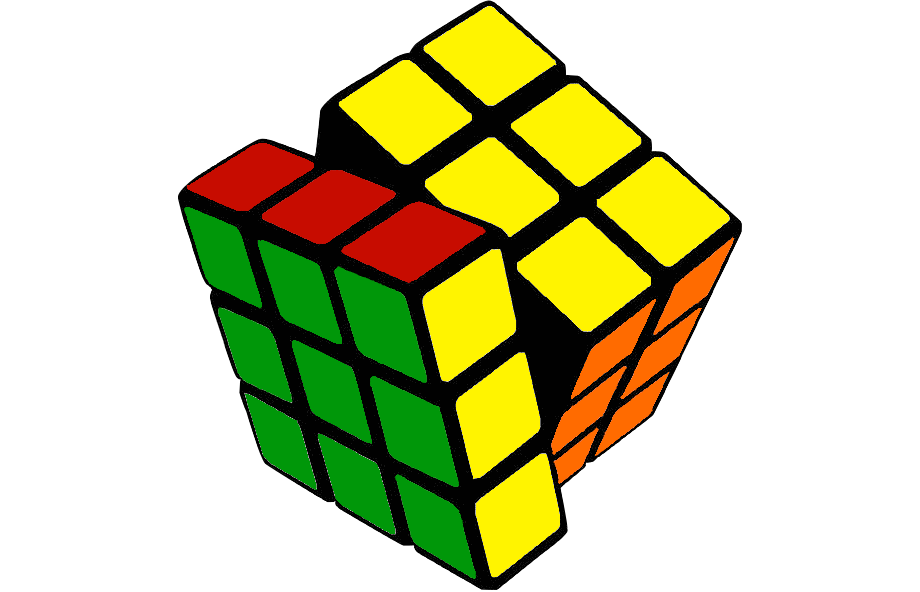All essential OLL and PLL algorithms
The algorithms below are all you need to reduce your solve time to under a minute. The OLL algorithms assume you have already solved the yellow cross and therefore have all yellow edge pieces in place. Once the last layer is oriented, the last stage of the solve will generally require at least two of the PLL algorithms below.
< a note on cube notation >
[R , L , U , D , F]:
turn layer
90° clockwise to
center of cube
(arrow direction)
[R' , L' , U' , D' , F']:
turn entire layer
90° counter-clockwise
(opposite arrow direction)
[R2 , L2 , U2 , D2 , F2]:
turn layer 180°
[Rw , Lw , Uw , Dw, Fw]:
turn outermost
two layers 90°
OLL (Orientation of the Last Layer)
The goal of this stage is to get all the yellow faces on the same side of the cube opposite the white side. Each case outlined below is accompanied by a name and the relative probability of its occurrence in any given solve.
In the algorithms presented below, yellow is the 'U' layer, so the cube should be held with the yellow side on top, facing up, with the unsolved yellow faces (represented by thin yellow bars) oriented in the same way as the corresponding image.
< L >
4 / 27
F R' F' Rw
U R U' Rw'
< H >
2 / 27
R U R' U
R U' R' U
R U2 R'
< Pi >
4 / 27
R U2 R2 U'
R2 U' R2 U2
R
< Antisune >
4 / 27
R U2 R' U'
R U' R'
< Sune >
4 / 27
R U R' U
R U2 R'
< U >
4 / 27
R2 D R' U2
R D' R' U2
R'
< T >
4 / 27
Rw U R' U'
Rw' F R F'
PLL (Permutation of the Last Layer)
The goal of this stage is to get all of the previously oriented cubelets, with all yellow faces on the same side, into their final and correct positions. Once again, each case presented below is accompanied by a name and the likelihood of its occurrence in a solve.
In the cases presented below, color is not as important as the patterns that the colors represent. If possible, match your cube to the example, but in most cases you'll want to recognize which cubelets are out of place relative to the others and use the case as a template.
< T - Perm >
1 / 18
R U R' U'
R' F R2
U' R' U'
R U R' F'
< H - Perm >
1 / 72
M2 U
M2 U2
M2 U
M2
< U - Perm (a) >
1 / 18
R U' R U
R U R U'
R' U' R2
< U - Perm (b) >
1 / 18
R2 U R U
R' U' R' U' R'
U R'
< Z - Perm >
1 / 36
M2 U M2 U
M' U2 M2 U2
M' U2
< A - Perm (a) >
1 / 18
